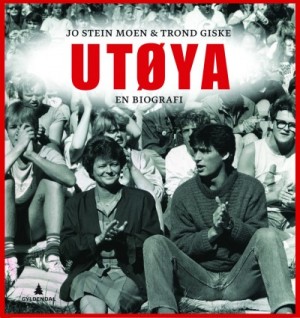Trond Giske has been making lots of headlines in recent months as Norway’s busy and sometimes controversial trade minister, but he’s also managed to find time to write a book. Giske teamed up with former AUF vice-chairman and political adviser Jo Stein Moen to write a book on Utøya, the island now infamous around the world for being the site of the July 22 massacres last year.

The painful question of Utøya’s future is a source of much disagreement among massacre survivors and politicians. While AUF, the youth wing of the Labour Party (Arbeiderpartiet), has wanted to rebuild and return to the heart-shaped island in the Tyrifjord, others want to leave it as a memorial to the 69 people who lost their lives there.
The national agency in charge of historic preservation (Riksantikvaren) recently decided it wouldn’t petition to preserve Utøya’s buildings. None has enough historic cultural value, according to the agency. It is still undecided whether the café building, where so many were killed, will be demolished.
Political cradle
Perhaps in light of this debate, Giske and Stein Moen want to preserve some of the island’s rich past in what they call their ‘biography” of the island, detailing its importance as a political cradle.
The small island of 12,000 square metres first came to be associated with the labour movement in the 1930s, and was for many years the site of a holiday camp for the children of unemployed parents. It was given as a commemorative gift to AUF in 1950, and straight away became their ideological headquarters, where they regularly held meetings and courses, as well as yearly summer camps. There are few Labour politicians who did not cut their teeth on the island, braving its cold water and outdoor toilets, which were a feature of the island right up until the mid-1990s.
Giske told newspaper Dagsavisen that it is important for “Utøya – A Biography” not to be seen as another “July 22 book,” although the attacks, as the most serious event in its history, are given proper place. He added that it is perhaps a book for those who wonder what all the young people gathered on the island were involved in, what drove them, and what they were fighting for.
The ‘Utøya feeling’
The two authors have between them been to the island over 100 times, and gained their political education there.
“We wanted to tell people about Utøya’s significance in Norwegian politics, what we call the ‘Utøya feeling,'” said Stein Moen. He said that for him, the island was a combination of engagement and safety, and that he still clearly remembers “the emptiness I felt when I had to go home after my first summer camp, as a 16-year-old in 1988.”
At his first summer camp, Giske remembers meeting now-Norwegian Prime Minister Jens Stoltenberg, who was then leading AUF. But he also wants to remember the many thousands who did not go on to a political career, but who first got engaged in politics from their summers spent at the camps.
Burning issues over the decades
In writing the book, Giske and Moen interviewed most of the former AUF leaders who are still alive. Giske recalls the burning issues and debates from different decades. In 1972 it was discussion over the European Community. Norway had negotiated to join but voters eventually came to reject membership in a referendum and remained outside.
Similarly, in the 1990s, there were intense discussions over joining the European Union, over NATO, equal opportunity and much else. Both writers remember that there were threats, including death threats, from neo-Nazi groups, but they never once considered that Utøya could be a target for terrorism.
Their book, published by Gyldendal Forlag, extends from the geological formation of the island up through history, and how it ultimately landed in the hands of the labour movement in 1933. “This is also a book for the many who have asked what all these young people were doing there, also on July 22,” Giske told news bureau NTB when the book was released earlier this month. “What were they burning for?” He and Moen got the idea for writing the book while on their way from one funeral for a massacre victim to another last year.
“But we also want to remember all the thousands who have been (on Utøya) through the years, without going into politics themselves,” Giske told NTB. “They have been here some summers, ignited their political commitment, and then gone on to other things.”
Views and News from Norway/Nina Berglund
Please support our news service. Readers in Norway can use our donor account. Our international readers can click on our “Donate” button:

